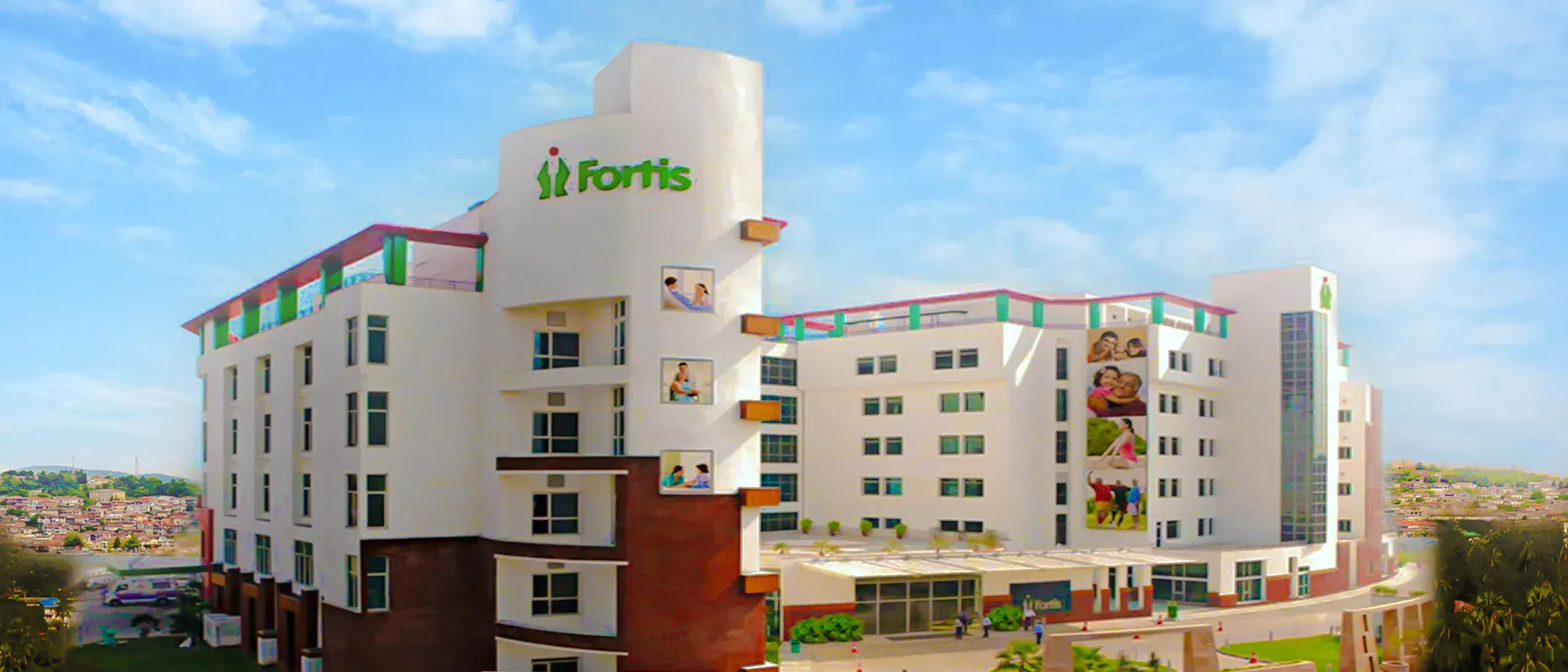Overview of Spine Tumour Surgery Treatment India
The abnormal mass of tissue in the spinal column is a spinal tumor which may or may not consist of the cancerous cell. The removal of the tumor from the spine can be done by spine tumor surgery. These tumor cells may be formed in the spinal column or may spread from other parts. Spinal tumors form in the neck region are the cervical tumors and those form in the upper back are thoracic tumors. The tumors in the lower back are the lumbar tumors of the spine. Hence, the spinal tumors are named according to the site of the tumor which forms in the spine. Most of the time, the tumor cells from the lungs, breast and prostate cancer spread and form tumors in the bony column of the spine. When the tumor in the spine is in its initial stage, the spine tumor surgery is performed to completely remove the tumor which also helps in preventing the malignant stage of cancer. But when the tumor cells are so extensive then the spine tumor surgery treatment is performed to limit the symptoms of pain and numbness and improve the overall quality of life of the patient. The recovery after the spine tumor surgery largely depends on the patient’s overall health and the skill of the surgeon. But for normal patients the recovery time is almost 6-8 months. After this time period, patients can perform most of the activities of daily life.
Types of Spine Tumour Surgery Treatment India
Here are some common types of spine tumor surgery treatments:
- Tumor resection
- Decompression surgery
- Spinal fusion
- Vertebrectomy
- Embolization
- Radiofrequency ablation
- Stereotactic radiosurgery
Tumor Resection
This is the most common type of surgery of all the spine tumor surgeries. In this surgery, the tumor is removed with some part of health tissue to prevent the recurrence of the tumor cells. During surgery, the important parts are preserved for normal functioning.
Decompression Surgery
Spinal decompression surgery is performed to relieve pressure from the structures. In this procedure, the tumor is removed to eliminate the pressure from the nerves. It is helpful in reducing symptoms of pain and numbness.
Spinal Fusion
In cases where removing the tumor destabilizes the spine, spinal fusion surgery may be performed. This procedure involves joining two or more vertebrae together using bone grafts, screws and rods to provide stability and prevent any complication.
Vertebrectomy
This surgical procedure involves removing an entire vertebra affected by the tumor. The remaining vertebrae are then fused together to maintain spinal stability.
Embolization
In some cases, tumors in the spine may have a rich blood supply. Embolization involves injecting substances into the blood vessels that supply the tumor which blocks the blood flow and reduces the risk of excessive bleeding during surgery.
Radiofrequency Ablation
This procedure uses heat generated by radio waves to destroy tumor cells. An electrode is inserted into the site of the tumor and then energy from radio waves is delivered to provide heat that kills the tumor cells.
Stereotactic Radiosurgery
This surgery uses non-invasive technique and delivers small radiation beams in the center of the tumor. It is often used for small tumors that are difficult to access through surgery.
Procedure of Spine Tumor Surgery
Here is the general overview of the procedure of spine tumor surgery:
Anesthesia: anesthesia is given to the patient to reduce the pain sensation and irritation during the procedure. Anesthesia numbs the area under procedure.
Incision: the incision is made at the affected site of the spine from which the tumor has to be removed. The extent of incision depends on the type of procedure.
Tumor Exposure: The surgeon will carefully dissect the surrounding tissues, including muscles, to expose the tumor and other parts of the bony spine. Special retractors may be used to hold the tissues apart and provide a clear vision.
Tumor Resection: the tumor is removed with some part of the healthy tissue. Other tumor resection techniques can also be used according to the situation.
Decompression: the tumor creates the pressure in the surrounding nerves which causes symptoms of pain. So decompression is necessary to relieve pressure from the structures in the surrounding.
Spinal Stabilization: In cases where the tumor removal destabilizes the spine, the surgeon may perform spinal fusion. This involves using bone grafts, screws, rods to join the affected vertebrae together which provides stability.
Closure: Once the tumor has been removed and any necessary spinal stabilization has been performed, the surgeon will close the incision by using sutures.
Diagnosis of Spine Tumour Surgery Treatment India
The diagnosis of spine tumor can be made by correlating the tests and clinical findings. The professional healthcare decides to go under surgery only after the accurate diagnosis. Some of the diagnostic tests are:
X-ray
The x-rays give the picture of the bony spine and reveal any abnormality present within the spine. A tumor mass can be detected through x-rays.
MRI
The magnetic resonance imaging gives a clearer picture of the spine by using magnetic waves. It also gives the picture of soft tissues in the spine which can be affected by the tumor.
Biopsy
Biopsy is the confirmed diagnosis technique to detect the cancer. In this tissue sample is removed and studied under laboratory conditions to check any cancerous cell in the tumor or to detect the grade of the tumor.
Laboratory Tests
Blood tests are performed to check any tumor markers in the blood which can give the idea of the source of tumor cells.
Cost of Spine Tumor Surgery Treatment in India
The cost of spine tumor surgery treatment in India ranges from USD 4800 to USD 5500. However, the cost may vary according to the patient’s condition and the need for additional procedures other than tumor removal. The cost may vary according to the facilities of the hospital and the skill of the surgeon.
The approximate cost range for Spine Tumor Surgery in different cities of India:
| Treatment Cities in India |
Min Cost in Dollar |
Max Cost in Dollar |
| New Delhi |
$ 2026 |
$ 3169 |
| Gurgaon |
$ 2078 |
$ 3117 |
| Noida |
$ 1948 |
$ 3246 |
| Chennai |
$ 2078 |
$ 2987 |
| Mumbai |
$ 2135 |
$ 3169 |
| Bangalore |
$ 2028 |
$ 3065 |
| Kolkata |
$ 1948 |
$ 2935 |
Symptoms and Risk factors
Here are some potential symptoms following spine tumor surgery:
- Pain
- Discomfort
- Weakness
- Numbness
- Restricted mobility
- Changes in bowel or bladder function
- Fatigue
- Swelling
- Redness
- Drainage
- Muscle stiffness
- Difficulty with balance or coordination
Risk Factors of Spine Tumor Surgery
Infection
There is a risk of developing an infection at the surgical site or in the deeper layers around the spine. This can happen right after surgery or may be after some time.
Bleeding
Spinal fusion surgery is one of the major surgeries in which there is a risk of bleeding either during the procedure or after the closure that can lead to further complications.
Nerve or Spinal Cord Injury
Spine bone covers the spinal cord and nerves passing through it. So it can be damaged during the performance of the procedure. The injury can lead to severe complications of pain, numbness and even paralysis.
Spinal Instability
The removal of large tumors of the spine can sometimes lead to spinal instability which then further requires the procedure to stabilize the spine.
Pain or Discomfort
While spine fusion surgery is supposed to limit the pain, there is a possibility of experiencing the same or new pain after the procedure. This can occur due to other spinal diseases or complications.
Blood Clots
After surgery, immobility or limited motion can form blood clots in the blood vessels of the legs. These blood clots can travel to major organs like the brain, heart and lungs and can cause severe life threatening complications.
Recurrence
Some of the high grade tumors can recur after the procedure and create complications in the recovery process.
Top Hospitals for Spine Tumour Surgery in India
Shaping the future of the healthcare institution and establishing the path to accomplishment.
Kokilaben Dhirubhai Ambani Hospital and Medical Research Institute Mumbai,India
Book Appointment
Top Doctors for Spine Tumour Surgery in India
Empower your Health with the Expertise of Leading Medical Professionals.
Dr Rana Patir Neuro and Spine Surgeon
Department of NeuroSurgery & Neuro and Spine Surgery
Chairman
Book Appointment
Dr. Hitesh Garg Spine Surgeon
Department of Spine Disorder
Senior Consultant
Book Appointment
Dr. Arvind Jayaswal
Department of Spine & Neuro and Spine Surgery
Director
Book Appointment
Treatment Costs for Spine Tumour Surgery
Be the change and be an opportunist in transforming healthcare.
How it's Works
Guiding your Journey from Discovery to Treatment Planning and Beyond.
Discovery
Get a consultation to discover about your treatment
Pre-Treatment
Admission to the best hospital and all pre-treatment facilities
Post Treatment
Get post-treatment follow-up care with medicine fulfillment
Treatment Planning
Hassle-free treatment planning with package & cost estimations
in-treatment
world-class quality procedures and equipment for treatment


























